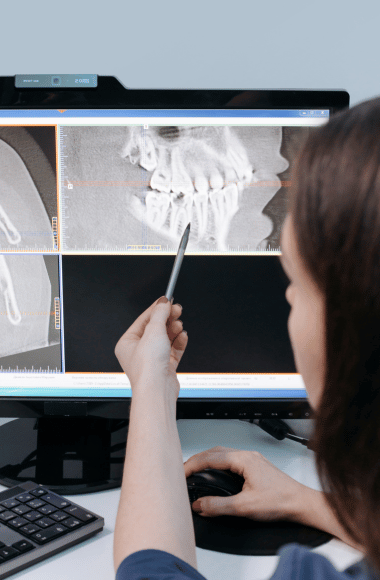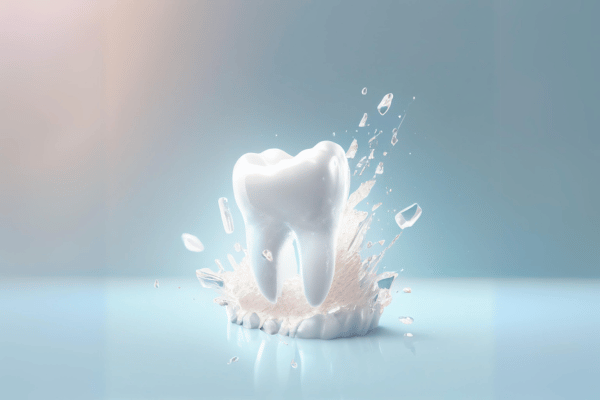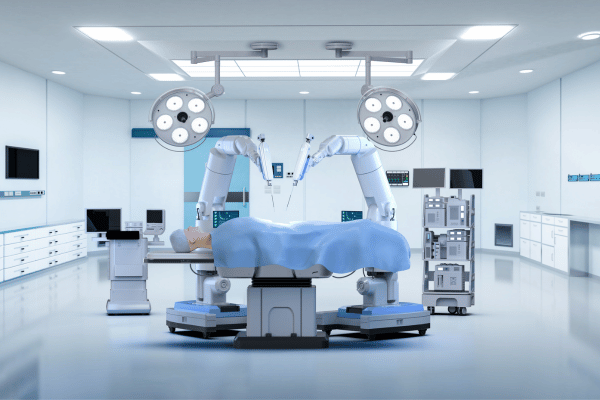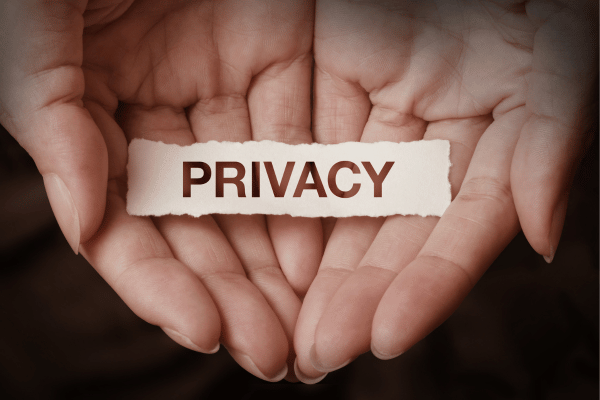
Table of contents
-
1. Advanced Diagnostics and Imaging
-
2. Less Invasive Procedures
-
3. Dental Regenerative Medicine
-
4. Digital health and teledental platforms
-
Advantages of Upcoming Dental Technologies
-
1. Increased Precision and Accuracy in Diagnosis and Treatment
-
2. Less Pain and Quicker Recuperation Times for Patients
-
3. Potential for Repairing and Regenerating Damaged Dental Tissues
-
4. Greater Accessibility to Dental Care via Teledentistry
-
5. Improved Empowerment and Engagement
-
Obstacles & Things to Think About
Technical developments and advances in oral care are driving a major revolution in dental health. Dentistry has a promising future, one that will almost certainly improve patient outcomes and drastically alter how we take care of our teeth. Let's look at some of the exciting new findings that may have long-term effects on oral health.
1. Advanced Diagnostics and Imaging

Although they have proven useful, traditional dental x-rays have certain drawbacks. Presenting cutting-edge imaging technologies including intraoral scanners and cone beam computed tomography (CBCT). Thanks to the incredibly accurate 3D images these technologies generate of the teeth, gums, and jawbone, dentists can diagnose problems with previously unheard-of accuracy. Furthermore, algorithms for artificial intelligence (AI) are being included in diagnostic programs to help with early oral cancer, gum disease, and cavity identification. These developments enable dentists to diagnose patients more accurately and provide customized treatment regimens, which eventually improve patients' oral health results.
2. Less Invasive Procedures
Thanks to the development of minimally invasive therapies, we could soon be able to put our fear of dental operations behind us. For example, laser dentistry uses concentrated light beams to do a range of operations with less pain and quicker recovery times. Furthermore, while successfully treating cavities, cracks, and other dental disorders, dentists can preserve a greater percentage of the native tooth structure thanks to developments in biomaterials and adhesive technology. These methods give patients a less intrusive and more comfortable dental experience by reducing the need for invasive procedures.
3. Dental Regenerative Medicine

In a future where dental damage is self-repairing, picture this. This could come to pass thanks to regenerative dentistry. Dental tissues, such as enamel, dentin, and periodontal ligaments, have enormous potential for regeneration through the use of stem cell therapy, growth factors, and tissue engineering techniques. This has the potential to transform the way that diseases like gum disease, dental decay, and tooth loss are treated by providing patients with more durable and natural options. Although regenerative dentistry is still in its infancy, it holds potential for improving dental health in ways that were previously unthinkable.
4. Digital health and teledental platforms
Digital health platforms and tele-dentistry can revolutionize dental care access in a more digital world. Through teledentistry, patients can conveniently get professional advice and guidance by consulting with dental professionals remotely. People may track their oral hygiene practices, get individualized advice, and even keep an eye on their dental health in real time with the use of digital health platforms, which include wearable technology and smartphone applications. By enabling patients to actively participate in their dental care, these technologies boost overall health and contribute to better results.
Advantages of Upcoming Dental Technologies
1. Increased Precision and Accuracy in Diagnosis and Treatment
Thanks to AI-assisted diagnostics and sophisticated imaging technology, dentists can identify dental problems with previously unheard-of accuracy. Better results for patients will result from more accurate diagnoses and customized treatment regimens. Dentists are more equipped to properly address specific concerns with tailored interventions when they have a stronger awareness of the patient's oral health status.

2. Less Pain and Quicker Recuperation Times for Patients
Compared to traditional approaches, minimally invasive procedures like biomaterial-based procedures and laser dentistry provide a more comfortable experience for patients. These methods frequently result in quicker healing timeframes, less pain, and less damage to the surrounding tissues. Patients benefit from less post-operative discomfort and can resume their regular activities sooner.
3. Potential for Repairing and Regenerating Damaged Dental Tissues
Periodontal ligaments, dentin, and enamel are just a few of the damaged dental tissues that regenerative dentistry may be able to heal and regenerate. This innovative method may mean that conventional restoration procedures like dental implants and fillings are no longer necessary. Regenerative therapies provide patients with more natural and long-lasting alternatives for preserving oral health by utilizing the body's healing mechanisms.
4. Greater Accessibility to Dental Care via Teledentistry

By enabling patients to consult with dentists from a distance, teledentistry reduces access obstacles. Those who live in remote or underdeveloped locations and may not have easy access to dental care would especially benefit from this. The utilization of telecommunication technologies enhances the accessibility of dental services by enabling patients to obtain professional guidance, diagnosis, and treatment suggestions without requiring in-person visits.
5. Improved Empowerment and Engagement
Patients' digital health platforms enable individuals to actively participate in managing their dental health. People can measure their brushing habits, track their progress in maintaining good oral hygiene, and get individualized suggestions from dental specialists by using smartphone apps, wearable technology, and internet portals. Digital platforms encourage patient participation, adherence, and general well-being by giving them the instruments and resources they need to monitor and maintain their dental health.
Obstacles & Things to Think About
Although oral health appears to have a bright future, there are certain obstacles to overcome, let's talk about the difficulties and factors to be aware of about upcoming dental technologies.
1. Cost and Accessibility
Although modern dentistry technologies are very beneficial, it is still difficult to guarantee that all population segments will have equal access to these advancements. The substantial expenses linked to the procurement and execution of state-of-the-art apparatus and protocols could potentially restrict entry for those with insufficient financial means or insurance coverage.
2. Ethical Considerations
Patient permission, privacy, and the possible misuse of biotechnologies are some of the difficult ethical issues raised by the use of stem cells and genetic engineering in dentistry. To guarantee that these technologies are used sensibly and in the patient's best interests, ethical standards and laws must be put in place. To effectively negotiate the ethical implications of newly developed dental treatments and therapies, transparency, informed consent, and continuous ethical oversight are crucial.
3. Data Privacy and Security Problems

As digital health platforms are employed in dentistry, concerns about data security and privacy are growing in importance. Patient data collected through mobile apps, wearable devices, and online portals must be protected against unauthorized access, misuse, and breaches. Strong security measures, encryption methods, and data management procedures must be used by technology providers and dental clinics to protect patient privacy and adhere to laws like HIPAA.
4. Usability and safety Verification
While there are many reasons to be positive about the advancement of dental technology, further testing and validation are required to show the innovations' usefulness and safety. Further investigation and advancement are required to assess the long-term effects, possible hazards, and advantages of new medications and treatments. Collaboratively, researchers and regulatory agencies need to conduct clinical trials to verify the effectiveness of new technologies and ensure patient safety.
Conclusion
There is a bright future for dental health because of cutting-edge discoveries and technologies that will revolutionize how we treat oral health. With the acceptance of these developments and the resolution of any obstacles, we can anticipate a time when everyone will benefit from perfect oral health and stunning smiles for many years to come.
FAQs
Q. What are the biggest advantages of new dental technologies?
A. The biggest advantages of new dental technologies include more accurate diagnoses and personalized treatment plans, facilitated by AI and advanced imaging. Additionally, they allow for less invasive procedures with quicker healing times and reduced pain.
Q. Are there any concerns about these new technologies?
A. Concerns about these new technologies revolve around cost and accessibility, emphasizing the importance of ensuring equal access to these advancements for everyone. Ethical considerations regarding patient consent, privacy, and the potential misuse of biotechnologies are also significant concerns.
Q. How will these technologies change the future of dentistry?
A. These technologies are poised to change the future of dentistry by enabling earlier diagnoses and more effective treatments, ultimately leading to better oral health outcomes. Moreover, they promise more comfortable and convenient dental experiences for patients.
Q. When can we expect to see these technologies widely available?
A. The timeline varies for each technology. Some, like digital imaging and teledentistry, are already available. Others, like regenerative dentistry, are still in their early stages and may take several years before widespread adoption.
Q. How can I learn more about these technologies?
A. You can consult us, as we can provide you with information on specific technologies and how they might benefit you. And help you get on the track of your dream smile.



